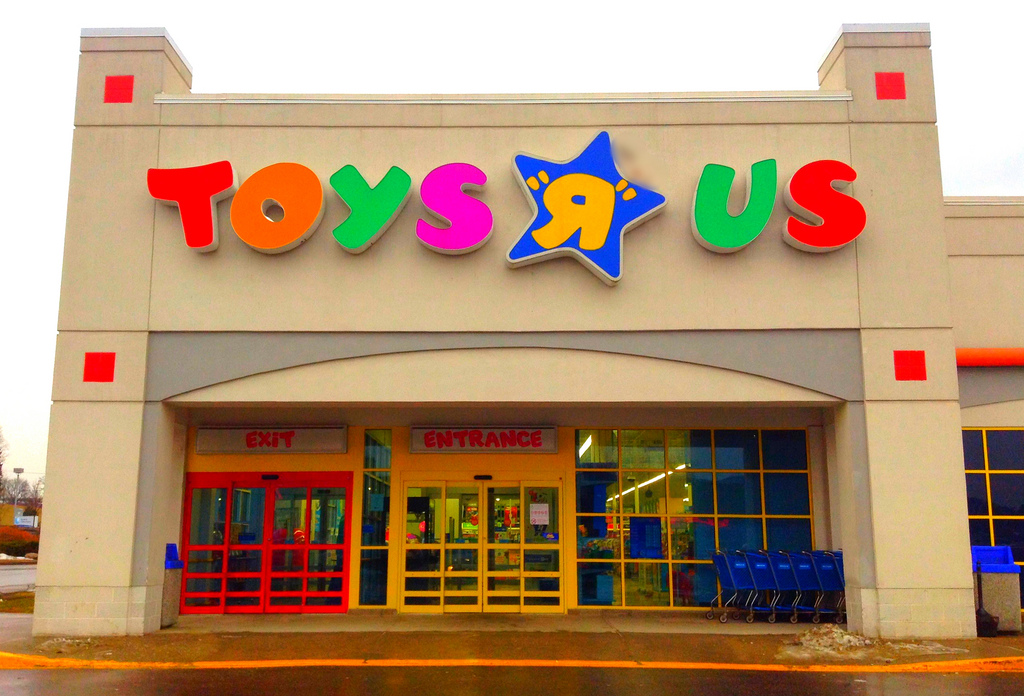Andrei Rogobete: Farewell, Toys R Us

It looks like this winter has not only brought us some harsh weather, but also a harsh reality check for the consumer industry.
On Wednesday 28th February 2018 ‘Toys R Us’ UK collapsed into insolvency, leaving over 100-based UK stores facing foreclosure and over 3,000 staff with a big question mark over their employment. Maplin is also following in its footsteps with over 200 stores and some 2,300 jobs at risk.
Yet this all feels a bit Deja-vu.
Last year we have seen the fall of two high street giants, HMV and BHS. And the picture is not looking much brighter for any of the other major retailers. Prezzo, the Italian restaurant chain and clothing retailer New Look have both committed to “major restructuring” that could further result in the loss of thousands of jobs. Research conducted by Deloitte found that over 100 UK retailers went bust in 2017, a 28% increase over the previous year.
Looking back at Toys R Us – what happened? Has the digitalisation of the toy market been so dramatic that their business model simply didn’t stand a chance of survival? Was Toys R Us too slow in adapting to this new environment? Did the company suffer from poor internal decision-making?
As with most cases like this – the answer probably lies somewhere in the middle.
There is no doubt that the arrival of online retailers like Amazon and Ebay has had a dramatic impact on the profitability of stores like Toys R Us. A business with physical, customer-facing stores simply cannot compete on price with one that in effect, only needs a distribution warehouse. Amazon and Toys R Us are not on a level playing field – the overheads of one can never be matched by the other. As a result, the boom in online toy sales has been nothing short of remarkable. If in 2005 total sales accounted for approx. $2.5 bn, by 2016 they reached $12 bn – almost a 500% increase.
Diane Wehrle, Director of Springboard Consulting, said that digitisation is fundamentally transforming the high street. It will become as much about socialising as it is about shopping, “There’ll be more coffee available in a fashion shop than there is now […] There may be work areas, […] having pods or workstations on the High Street could be an opportunity for some retailers. We’re going to see these collaborations”.
So the industry is rapidly changing – but a brief look over the financial accounts of Toys R Us should set off alarm bells for most analysts and accountants.
The beginning of the end really started in September 2017 when the US arm of Toys R Us filed for Chapter 11 bankruptcy. The company initially grew out of a small furniture business for children. Founder, Charles Lazarus found that selling toys instead of furniture was far more profitable and in 1957 officially established Toys R Us. The company experienced terrific growth over the decades and established itself as one of the global leaders in toy sales.
It floated on the stock exchange until 2005 when via a leveraged buyout (LBO), a consortium of investors took control of the company. This cost over $6.6 bn and increased the company’s total debt from just over $1 bn in 2004 to over $5 bn in 2005. We can talk about the benefits and risks of LBOs another time but as a general rule, LBOs only work as long as there is a positive, steady cash flow.
Unfortunately for Toys R Us this was the perfect storm. A rapidly changing industry and insurmountable debts gave it little chance of survival.
A part of me feels saddened and rather nostalgic. One of the clearest memories from my early childhood was when my father took me on a surprise trip to Toys R Us for my birthday. I got the white sword from the Power Rangers. The excitement and pure joy I experienced of walking into that Toys R Us can never be replicated through a computer screen. It is probably one of the reasons why this memory remains so clear in my mind despite two decades going by.
Toy stores are becoming a boutique experience for the upper echelons of the market. Parents that want their kids to have the experience must both have the time and willingness to pay the price premium. My gut feeling is that the click of a mouse is the only experience most children will ever have.
Hopefully I am proven wrong.

Andrei Rogobete is a Research Fellow with the Centre for Enterprise, Markets & Ethics. For more information about Andrei please click here.
